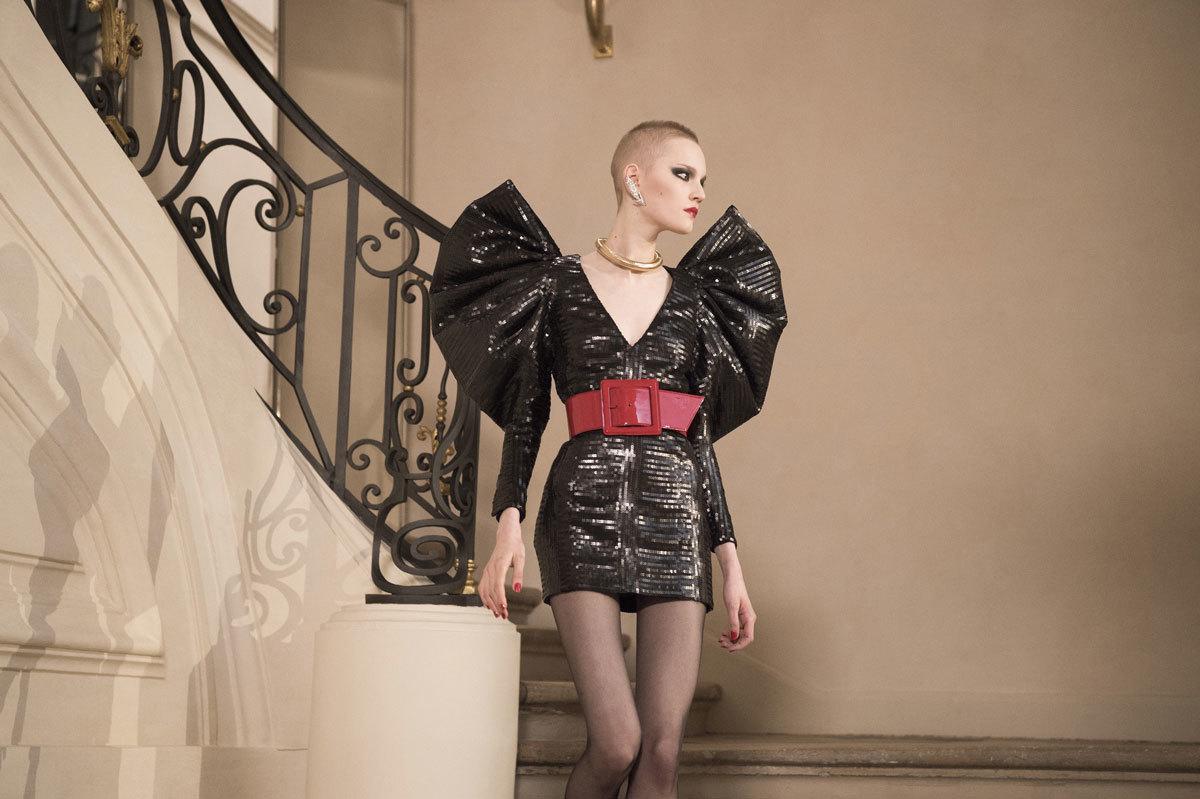The turn of 2016 was marked by hype for the 500th anniversary of Thomas More’s Utopia, and wasn’t that a slap in the face. 2016 has been a bruise on the body of our consciousness — a little sore, a little agitated, a little swollen with indignity. Naturally with its series of unfortunate events impacting the exterior and interior worlds of designers, it translated over to the fashion of the year.
Many collections have been defined by a swelling mutation of silhouette, of histrionic colors, of crazed styling. Essentially, the characters on the catwalk have worn the fabric of our society’s meltdown. But irrespective of a wider social context, the takeaway is that emotional intensities have risen to surface level. The popularization of slogan designs tells us that our psychological worlds — as ugly and as beautiful as they can often be — don’t need to be hushed for the sake of onlookers. It’s a nice thought. The year’s solemnity could have induced the acedia of elasticated trousers and that stained hoodie from your graduate class, but it’s instead inspired a new energy. Activity, anxiety, revolt, friendship — all discussed and asserted in the face of the struggle.
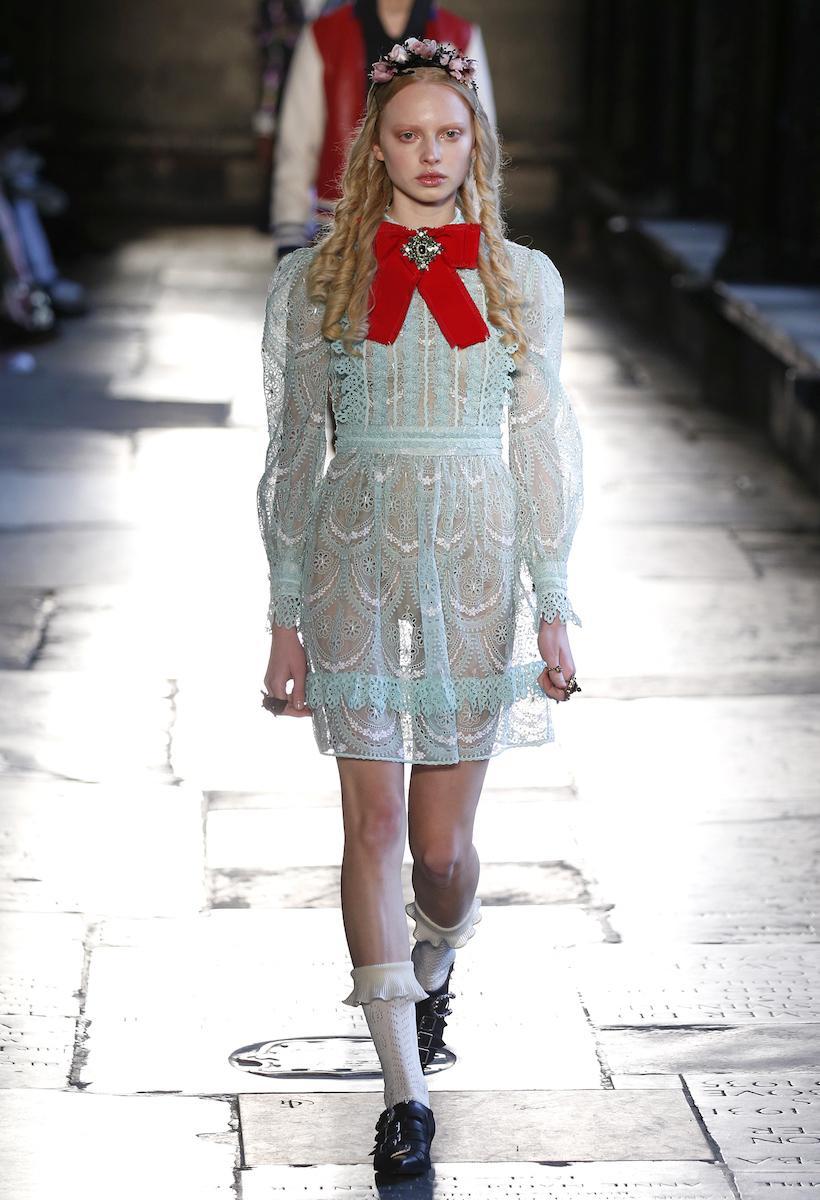
Gucci is a large voice in this, naturally, with creative director Alessandro Michele behind the introduction of manic bricolage into the mainstream to great success. The zeitgeist has shifted out of favor with the unrealistic, high-octane sexuality of Gucci’s pre-Michele protagonists. Instead, the hidden beauty and awkward frenzy of Michele’s muse makes more sense to us today, given our social move against old, unrealistic aesthetic ideals (and body-shaming, photoshopping, whitewashing).
Over the past year of collections, the bookish glitter apologists of Michele’s vision have been spiraling further into manic territory. As have Vetements’s characters, neckless in their tight, velour hoodies, and their thigh-high boots that crept further up the leg each season until finally hitting absurdity (and the ribs). The same with Galliano’s surrealist designs this year at Maison Margiela, and Hedi’s final Saint Laurent collection for fall/winter 16. Clothes are blooming into beautiful monstrosities of their past selves, overgrowing the human form, and, in many cases, outgrowing the usual requisite for simplistic sexual pageantry. Are they instead more in line with our authentic private lives, as opposed to our public selves?
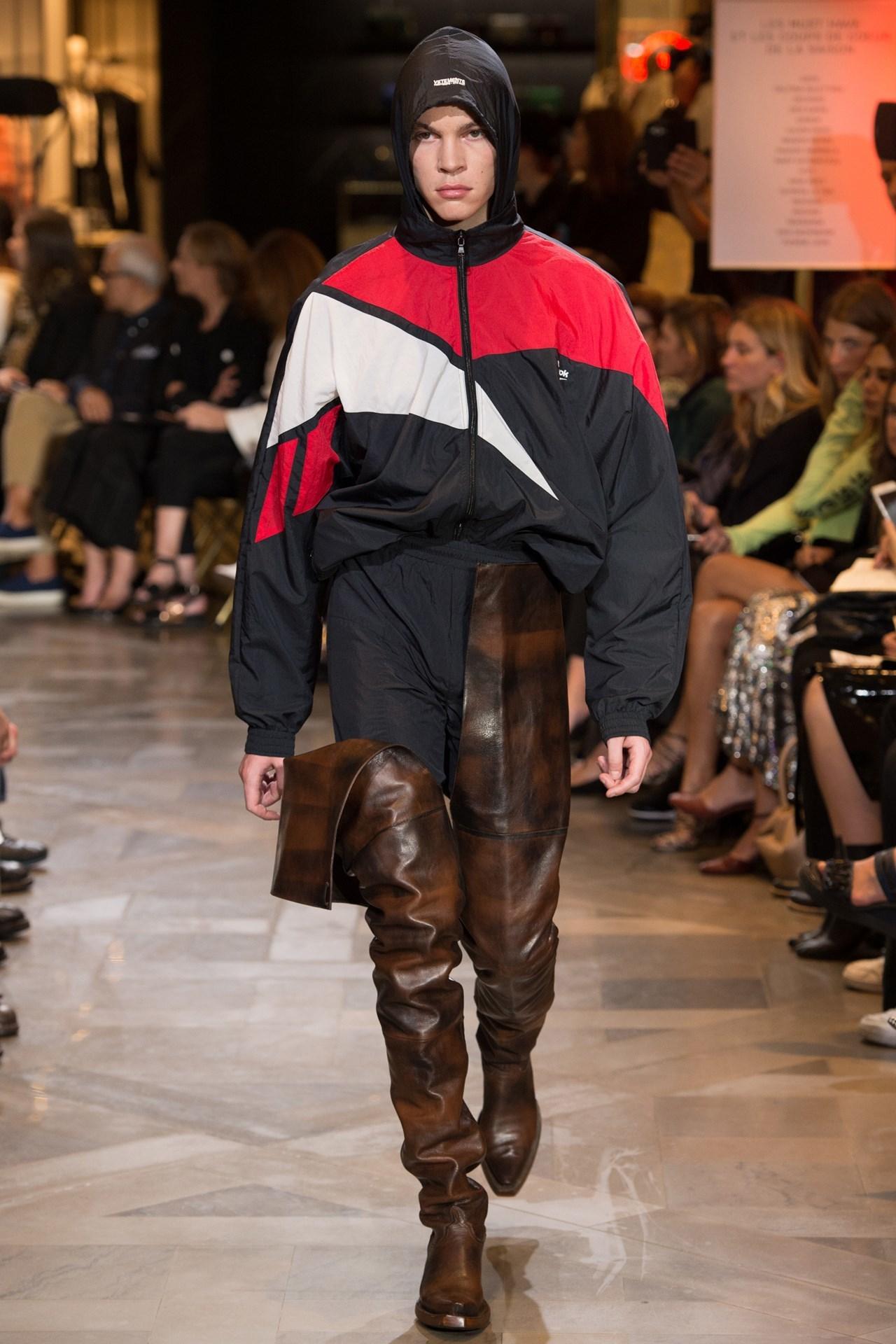
It’s as if these new characters crawled out of the dank basement of our subconscious. They’re a little weird, and dreamlike, and latent. Viktor&Rolf’s unusually emotional spring/summer 2016 couture show is called to mind, particularly given the house’s proclivity for coded designs. As the collection of white, technical piqué, cubist dresses proceeded, each model’s look became more willful and animated than the last, until, nightmarishly, they began growing their own big, deformed faces that shrouded the girls’ heads. The soundtrack for the show was a recording of a Belgian girls’ choir singing Radiohead’s “Creep.”
Particularly masterful at drawing emotional turbulence to surface level is NEWGEN’s Marta Jakubowski. Her spring/summer 17 was an escape into childhood, vividly colored, awkwardly fit, with heads cloaked in nebulous films of gauze. It included such fondly memorable pieces as a bodycon, fuchsia, velour peddle-pusher catsuit. It was playful, impulsive, whimsical, sensual, earnest — all traits so often given up for some delusion of maturity. It was, perhaps, the right proposition for Jakubowski’s demographic, as we continue to feel, bizarrely, more stratified than ever from the “adult” set instead of being inducted into it.
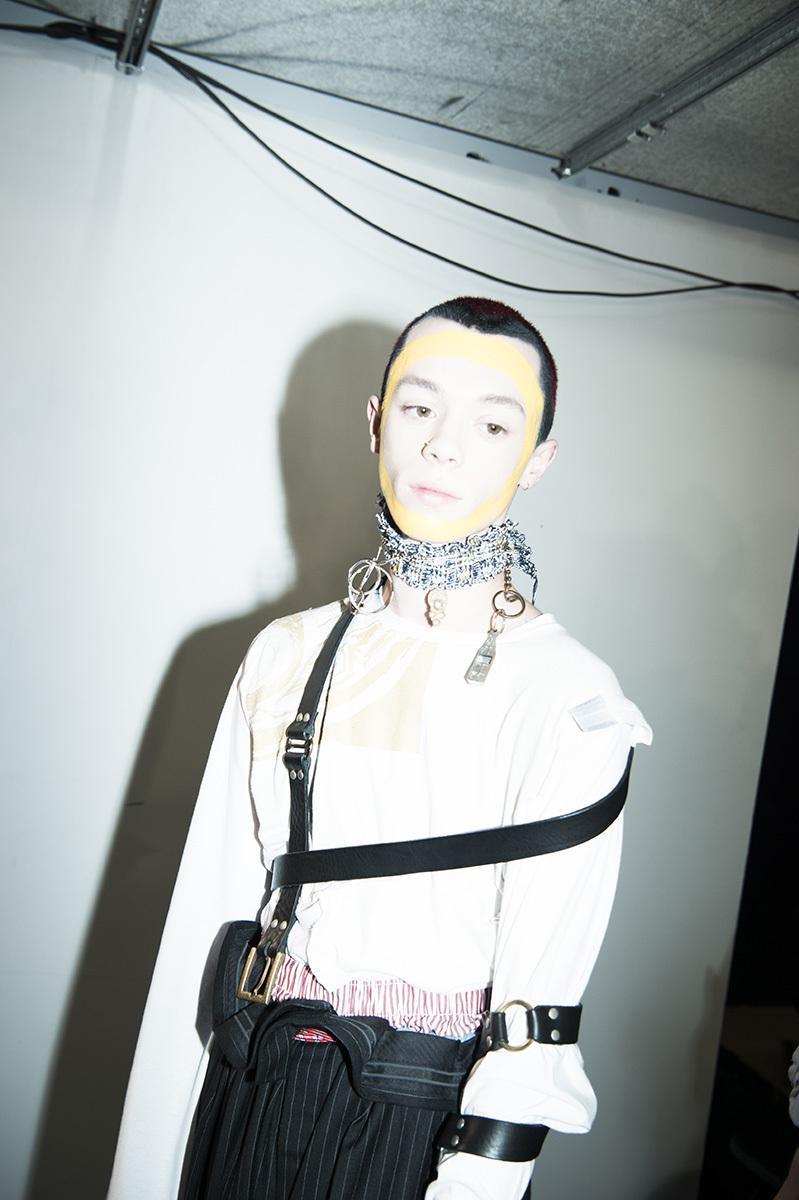
Certainly, the young designer voices have significant perspectives on struggling for the industry to pay attention to. Matty Bovan and Charles Jeffrey deserve honorable mention, representing the art-school grad’s grapple with fiscal insecurity. Both of their brands — in their fantasies of colors and shapes and storytelling — celebrate the glory of fringe communities and subcultural families. Fundamentally, we are a demographic of loneliness, of insecurity for the future, and a feeling of lack of political representation for our majority. Mental Health Awareness Week this year focused on relationships. The struggle is pandemic, but it’s intensely distilled for those who grew up with modern family structures, impossible work hours trying to break into the system, and internet hyperreality.
A retelling of this latter point was at Hood By Air’s spring/summer 17 show, featuring Pornhub logos, and awkwardly titled Handkerchief. At the show, models performed stroppiness: they texted on their phones, or knocked their bags against the heads of people in the front row. Some wore double-facing cowboy boots, and limped down the catwalk. The visual intensity of their mutant silhouettes, lurid colors, slogans, 2D-flatpacked shirts, sleeves down to their feet, heads dripping with pomade, was a picture of instability that caricatures our state. But the clothes weren’t wallowing or defeated — they were tinged with obnoxious defiance. They said “fuck off” to what it is we might be facing: essentially, a eugenic antagonism toward Otherness.
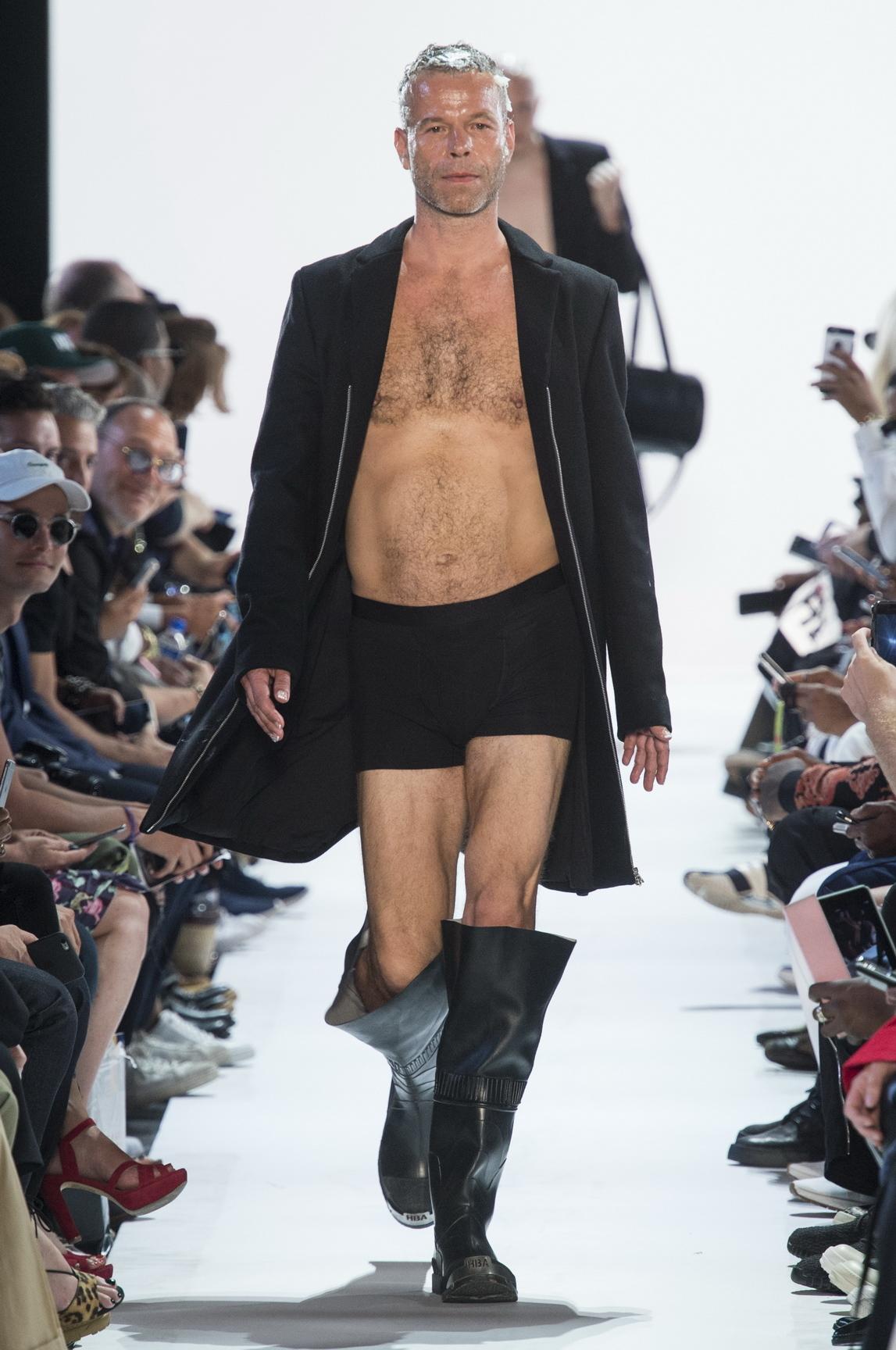
Of course, by the nature of high fashion’s main customer demographic, many of the collections shown continued to walk the cautious line of traditionalism. But the year’s growing trend of 80s revival had aspects of parody to it — a kind of light satire of the decades yuppies and conservatism that felt ready to reintroduce to the conversation.
Because, ultimately, that’s our visible horizon. 2016 has been made up of a series of gestures whose ramifications we’ll feel after the intermission. Fashion is only minuscule in the forms of protest for us to begin to consider, but it is still an empowering mode of expression, of culture, of feelings, of ourselves.
An apt departing thought derives from Opening Ceremony’s show notes for fall/winter 16. Staged as an ersatz beauty pageant, it sought to subvert the traditional values of the likes of the ex-Trump-owned Miss Universe. The notes read, “on the surface, fashion has little to do with politics. Yet when we get dressed, we make decisions about which aspect of ourselves to present to the world. When we asked our friends about the issues that matter to them… immigration, economic inequality, police brutality, and gender discrimination, among others — we were struck by how many of them hinged on the ability to express one’s identity freely.” Time for you to do you. Because you know what’s real? The struggle. The struggle is real.
Credits
Text Kinza Shenn
